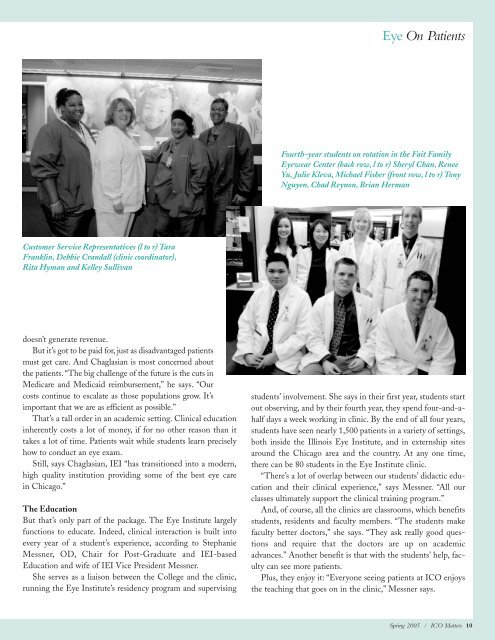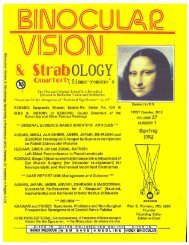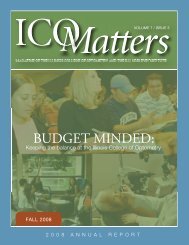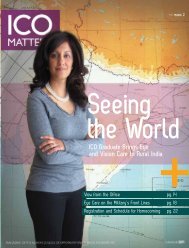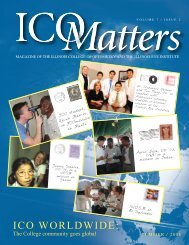EyeOn Patients - Illinois College of Optometry
EyeOn Patients - Illinois College of Optometry
EyeOn Patients - Illinois College of Optometry
Create successful ePaper yourself
Turn your PDF publications into a flip-book with our unique Google optimized e-Paper software.
Customer Service Representatives (l to r) Tara<br />
Franklin, Debbie Crandall (clinic coordinator),<br />
Rita Hyman and Kelley Sullivan<br />
doesn’t generate revenue.<br />
But it’s got to be paid for, just as disadvantaged patients<br />
must get care. And Chaglasian is most concerned about<br />
the patients. “The big challenge <strong>of</strong> the future is the cuts in<br />
Medicare and Medicaid reimbursement,” he says. “Our<br />
costs continue to escalate as those populations grow. It’s<br />
important that we are as efficient as possible.”<br />
That’s a tall order in an academic setting. Clinical education<br />
inherently costs a lot <strong>of</strong> money, if for no other reason than it<br />
takes a lot <strong>of</strong> time. <strong>Patients</strong> wait while students learn precisely<br />
how to conduct an eye exam.<br />
Still, says Chaglasian, IEI “has transitioned into a modern,<br />
high quality institution providing some <strong>of</strong> the best eye care<br />
in Chicago.”<br />
The Education<br />
But that’s only part <strong>of</strong> the package. The Eye Institute largely<br />
functions to educate. Indeed, clinical interaction is built into<br />
every year <strong>of</strong> a student’s experience, according to Stephanie<br />
Messner, OD, Chair for Post-Graduate and IEI-based<br />
Education and wife <strong>of</strong> IEI Vice President Messner.<br />
She serves as a liaison between the <strong>College</strong> and the clinic,<br />
running the Eye Institute’s residency program and supervising<br />
Eye On <strong>Patients</strong><br />
Fourth-year students on rotation in the Fait Family<br />
Eyewear Center (back row, l to r) Sheryl Chan, Renee<br />
Yu, Julie Kleva, Michael Fisher (front row, l to r) Tony<br />
Nguyen, Chad Reynon, Brian Herman<br />
students’ involvement. She says in their first year, students start<br />
out observing, and by their fourth year, they spend four-and-ahalf<br />
days a week working in clinic. By the end <strong>of</strong> all four years,<br />
students have seen nearly 1,500 patients in a variety <strong>of</strong> settings,<br />
both inside the <strong>Illinois</strong> Eye Institute, and in externship sites<br />
around the Chicago area and the country. At any one time,<br />
there can be 80 students in the Eye Institute clinic.<br />
“There’s a lot <strong>of</strong> overlap between our students’ didactic education<br />
and their clinical experience,” says Messner. “All our<br />
classes ultimately support the clinical training program.”<br />
And, <strong>of</strong> course, all the clinics are classrooms, which benefits<br />
students, residents and faculty members. “The students make<br />
faculty better doctors,” she says. “They ask really good questions<br />
and require that the doctors are up on academic<br />
advances.” Another benefit is that with the students’ help, faculty<br />
can see more patients.<br />
Plus, they enjoy it: “Everyone seeing patients at ICO enjoys<br />
the teaching that goes on in the clinic,” Messner says.<br />
Spring 2005 / ICO Matters 10


